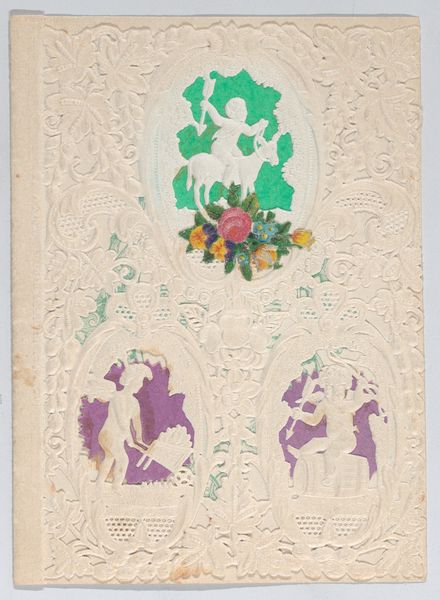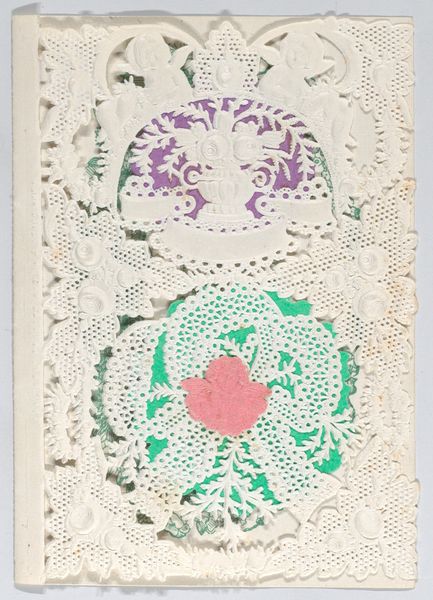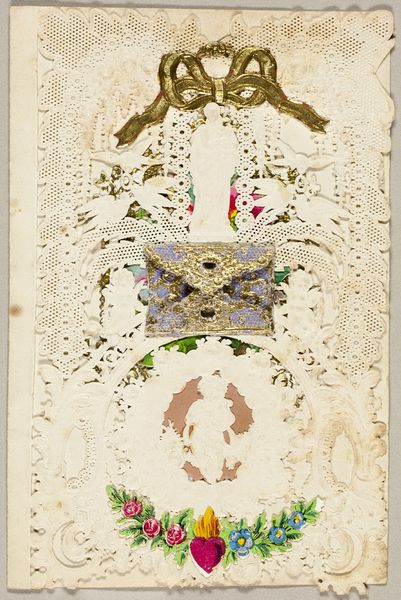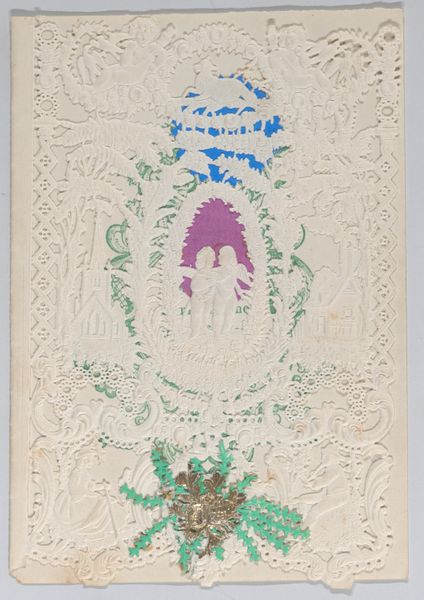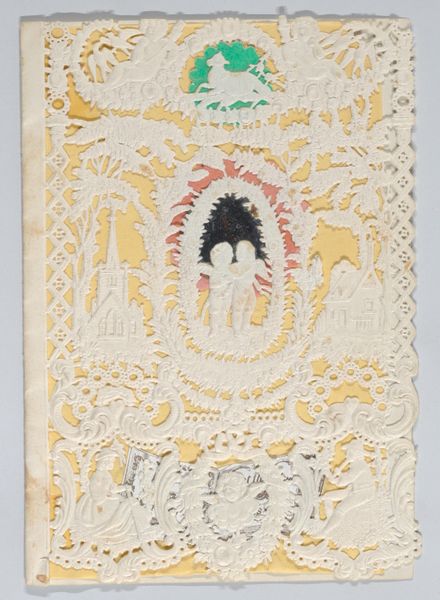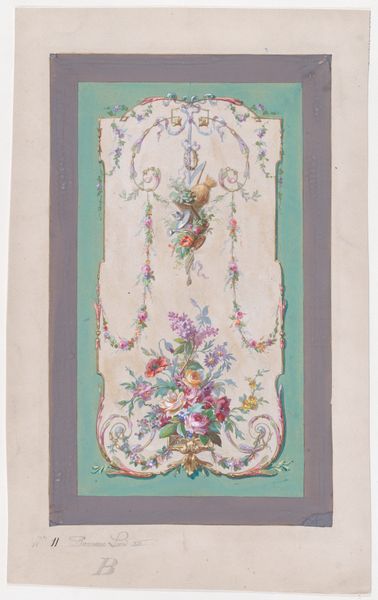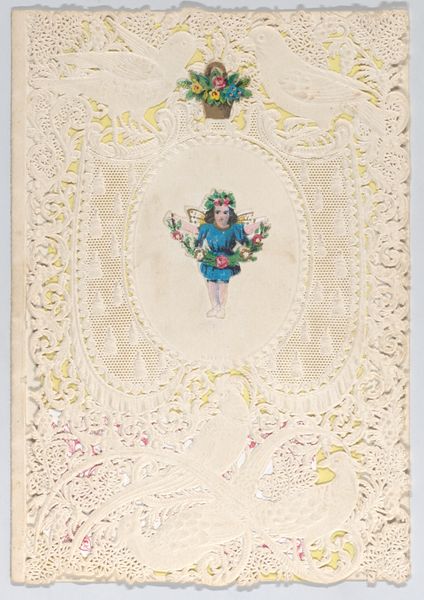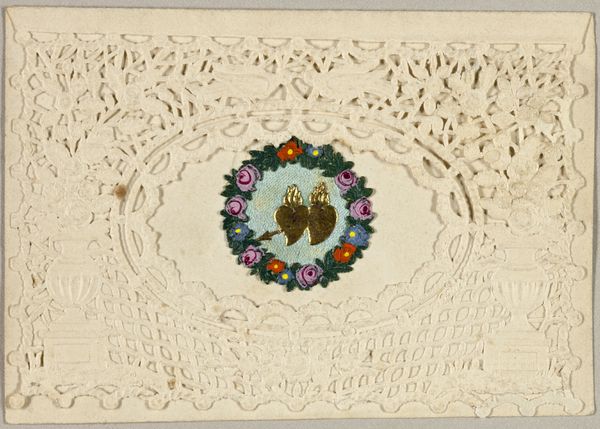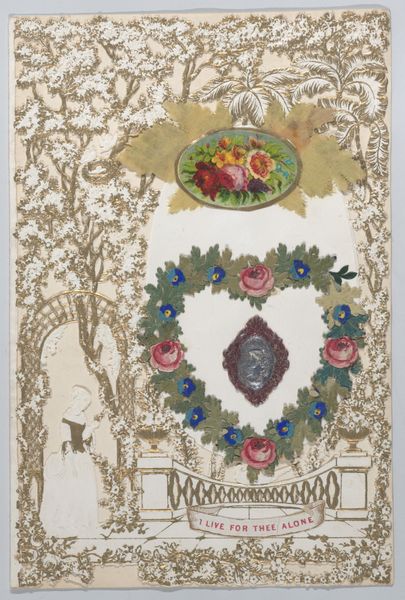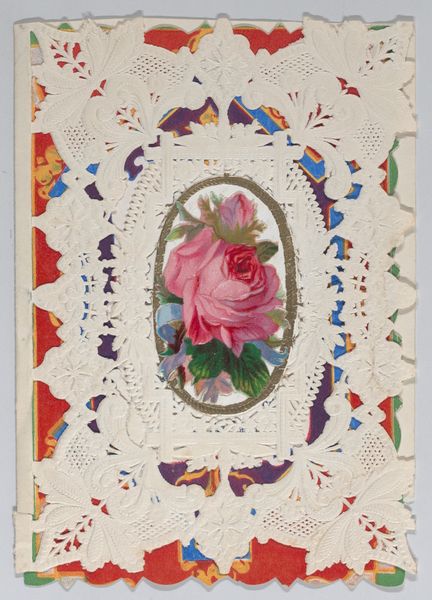
Dimensions: Width: 2 7/8 in. (7.3 cm) Length: 3 3/4 in. (9.5 cm)
Copyright: Public Domain
Curator: Take a look at this intriguing piece. It’s called "Valentine," created anonymously sometime between 1845 and 1875. What strikes you first? Editor: It’s overwhelmingly delicate. All that lace-like detail, the pastel watercolors peeking through…it feels incredibly fragile, a whisper of a sentiment. Like something that could easily fall apart. Curator: That fragility is interesting. These Valentine cards became quite popular in the Victorian era as a tangible expression of sentiment in a rapidly industrializing society. The intricate detail, achieved through a combination of printing and hand-applied watercolor, represented a level of care and investment that mass-produced goods couldn't match. Editor: Right, it’s like a coded language of love. We see the cherubs up top, those familiar symbols of affection, but arranged within a larger scheme dominated by floral motifs. Flowers themselves have rich iconographic meanings - are we supposed to analyze the significance of different floral patterns here, deciphering a suitor’s intentions? Curator: Possibly. While individual blooms had specific connotations, the overwhelming floral ornamentation itself speaks to a Victorian sensibility prioritizing ornate displays. Consider how Valentine’s Day shifted during this time, becoming less of a rowdy festival and more of a restrained, sentimental occasion celebrated through commercially produced goods. Editor: So, the mass production undercuts the notion of genuine, hand-crafted sentiment, even when it appears visually opulent. Is this ornate detailing a way to distract from or perhaps compensate for mass production and commercial culture? Curator: Exactly! The card becomes a site of negotiation. By giving such an elaborate creation, the sender attempts to show deep feeling through a socially acceptable and aesthetically pleasing way of the era. Editor: It reminds us that symbols themselves evolve and are always interpreted through a cultural lens. Today we look at the excessive details and may perceive manufactured feeling; someone in 1860 might see deep care and investment. Curator: Yes, context is key. And ultimately, the 'Valentine' is still a remarkable historical record about visual culture and shifting notions of intimacy. Editor: A pocket-sized cultural artifact imbued with both heartfelt intention and revealing contradictions. Thank you for this interesting conversation!
Comments
No comments
Be the first to comment and join the conversation on the ultimate creative platform.
